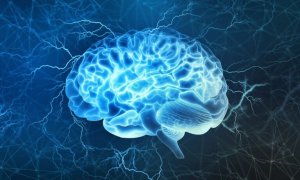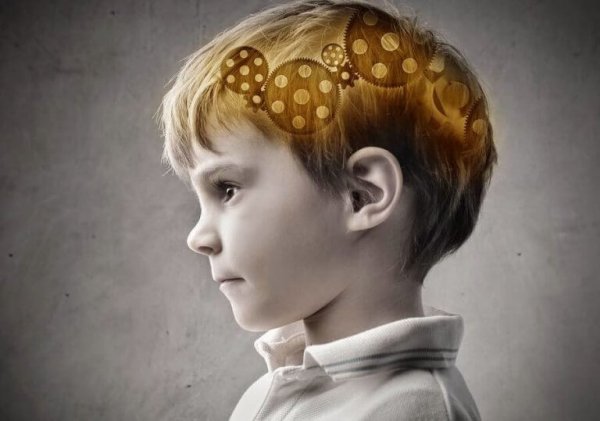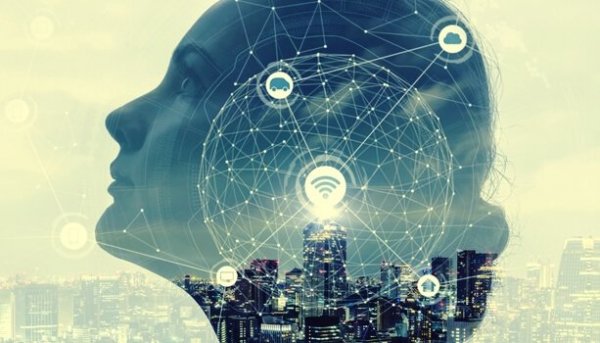The Prefrontal Cortex: One of the Most Interesting Parts of the Brain


Written and verified by the psychologist Valeria Sabater
The prefrontal cortex is the most sophisticated sign of our brain’s evolution. It was the last brain region to develop (from an evolutionary point of view) and display phylogenetic progress and full ontogeny. It’s easy to recognize because it’s very wrinkly, with a lot of folds, and is in the area closest to our face, where all our most complex mental and cognitive processes happen.
One of the goals of neuropsychology is to understand the complex relationship between our brain and our behavior. So it’ll come as no surprise that the prefrontal cortex is one of the most interesting. But it’s also one of the most important for understanding our capacity for abstract thought, and our self-awareness. To put it another way, it’s the brain structure that makes us truly human.
The prefrontal cortex is the area of our brain associated with planning cognitively complex behaviors, and the expression of our personality.
Scientists call these sophisticated tasks that happen in the prefrontal cortex “executive functions”. There’s a very specific reason for this: it’s the part of the brain that helps you tell the difference between good and bad. It’s the part that helps you evaluate your environment and take control of your own thoughts.

The prefrontal cortex: the last area of our brain to develop
Parents so often complain about how hard a time their teenage children have understanding things. They can’t control their impulses and don’t think enough before they act. They complain without realizing that the prefrontal cortex doesn’t finish developing until you’re 20-25 years old.
It’s true that teenage children might seem like “young” adults. But it’s worth remembering that their brains are still very immature. In fact, the human brain matures from the neck up. What that means is that the prefrontal cortex is the last area to start. We don’t develop the most sophisticated and valuable abilities our species has until later on.
That doesn’t mean kids and teenagers can’t make decisions until they hit twenty, though. They do so, and sometimes they even do it well. But you just have to remember that the development of the more complex skills comes year by year. So the more stimuli, challenges, support, and opportunities you give this cognitive evolution, the better it will turn out.
This is why you should always try to be understanding with kids at these ages. At the end of the day, all they need is time, patience, understanding, and good advice.

The parts of the prefrontal cortex
The prefrontal cortex is our sophisticated control center. It’s an extremely complex region with connections to several other brain regions. Structures like the hippocampus, the thalamus, and the other lobes have a direct line of communication to it. These channels are a place where we’re constantly sending and receiving information.
Now we’re going to look at how the prefrontal cortex is divided up:
- The orbitofrontal cortex. This deals with our social behavior and decision-making.
- The dorsolateral cortex. This is an absolutely essential part of human beings. It gives us the ability to plan, set goals, memorize things, and reflect… Neuroscientists have even theorized that this is where our consciousness lives.
- The ventromedial cortex. This part deals with our perception and the expression of our emotions.
What does the prefrontal cortex do?
A few years ago, scientists at the University of Missouri explained why our prefrontal cortex is so much bigger than the prefrontal cortex of other species on earth. According to them, it happened because of demographic pressure. In other words, the more people that entered our worldview, the better we got at interacting and communicating.
All of that, all this social, cognitive, and emotional experience, led to a more evolved prefrontal cortex. Now we’re going to show you what exactly this special part of our brain does.
- It coordinates and adjusts our social behavior.
- It helps you with impulse control and emotional processing.
- This is the area where a lot of processes related to our personality happen. Things like being more timid, more courageous, more open to experience, etc…
- Motivation, finding the excitement and energy to reach a goal, these things also come from the prefrontal cortex.
- It helps us focus our attention, organize complex information, and plan.
- This is also where our working memory lives. This involves all the cognitive skills we use to retain information as we experience or do new things.

Given how important all these functions are, you can probably guess how terrible it is to have prefrontal cortex brain damage. People who have gone through brain trauma, neural degradation, or development issues in this area tend to have problems controlling their behavior, planning, deciding things, creating things, etc…
They also tend to have a linear way of thinking, and often display antisocial behavior. These are delicate, complex situations that are yet more proof of how important this part of our brain is for how we exist as human beings.
The prefrontal cortex is the most sophisticated sign of our brain’s evolution. It was the last brain region to develop (from an evolutionary point of view) and display phylogenetic progress and full ontogeny. It’s easy to recognize because it’s very wrinkly, with a lot of folds, and is in the area closest to our face, where all our most complex mental and cognitive processes happen.
One of the goals of neuropsychology is to understand the complex relationship between our brain and our behavior. So it’ll come as no surprise that the prefrontal cortex is one of the most interesting. But it’s also one of the most important for understanding our capacity for abstract thought, and our self-awareness. To put it another way, it’s the brain structure that makes us truly human.
The prefrontal cortex is the area of our brain associated with planning cognitively complex behaviors, and the expression of our personality.
Scientists call these sophisticated tasks that happen in the prefrontal cortex “executive functions”. There’s a very specific reason for this: it’s the part of the brain that helps you tell the difference between good and bad. It’s the part that helps you evaluate your environment and take control of your own thoughts.

The prefrontal cortex: the last area of our brain to develop
Parents so often complain about how hard a time their teenage children have understanding things. They can’t control their impulses and don’t think enough before they act. They complain without realizing that the prefrontal cortex doesn’t finish developing until you’re 20-25 years old.
It’s true that teenage children might seem like “young” adults. But it’s worth remembering that their brains are still very immature. In fact, the human brain matures from the neck up. What that means is that the prefrontal cortex is the last area to start. We don’t develop the most sophisticated and valuable abilities our species has until later on.
That doesn’t mean kids and teenagers can’t make decisions until they hit twenty, though. They do so, and sometimes they even do it well. But you just have to remember that the development of the more complex skills comes year by year. So the more stimuli, challenges, support, and opportunities you give this cognitive evolution, the better it will turn out.
This is why you should always try to be understanding with kids at these ages. At the end of the day, all they need is time, patience, understanding, and good advice.

The parts of the prefrontal cortex
The prefrontal cortex is our sophisticated control center. It’s an extremely complex region with connections to several other brain regions. Structures like the hippocampus, the thalamus, and the other lobes have a direct line of communication to it. These channels are a place where we’re constantly sending and receiving information.
Now we’re going to look at how the prefrontal cortex is divided up:
- The orbitofrontal cortex. This deals with our social behavior and decision-making.
- The dorsolateral cortex. This is an absolutely essential part of human beings. It gives us the ability to plan, set goals, memorize things, and reflect… Neuroscientists have even theorized that this is where our consciousness lives.
- The ventromedial cortex. This part deals with our perception and the expression of our emotions.
What does the prefrontal cortex do?
A few years ago, scientists at the University of Missouri explained why our prefrontal cortex is so much bigger than the prefrontal cortex of other species on earth. According to them, it happened because of demographic pressure. In other words, the more people that entered our worldview, the better we got at interacting and communicating.
All of that, all this social, cognitive, and emotional experience, led to a more evolved prefrontal cortex. Now we’re going to show you what exactly this special part of our brain does.
- It coordinates and adjusts our social behavior.
- It helps you with impulse control and emotional processing.
- This is the area where a lot of processes related to our personality happen. Things like being more timid, more courageous, more open to experience, etc…
- Motivation, finding the excitement and energy to reach a goal, these things also come from the prefrontal cortex.
- It helps us focus our attention, organize complex information, and plan.
- This is also where our working memory lives. This involves all the cognitive skills we use to retain information as we experience or do new things.

Given how important all these functions are, you can probably guess how terrible it is to have prefrontal cortex brain damage. People who have gone through brain trauma, neural degradation, or development issues in this area tend to have problems controlling their behavior, planning, deciding things, creating things, etc…
They also tend to have a linear way of thinking, and often display antisocial behavior. These are delicate, complex situations that are yet more proof of how important this part of our brain is for how we exist as human beings.
This text is provided for informational purposes only and does not replace consultation with a professional. If in doubt, consult your specialist.







